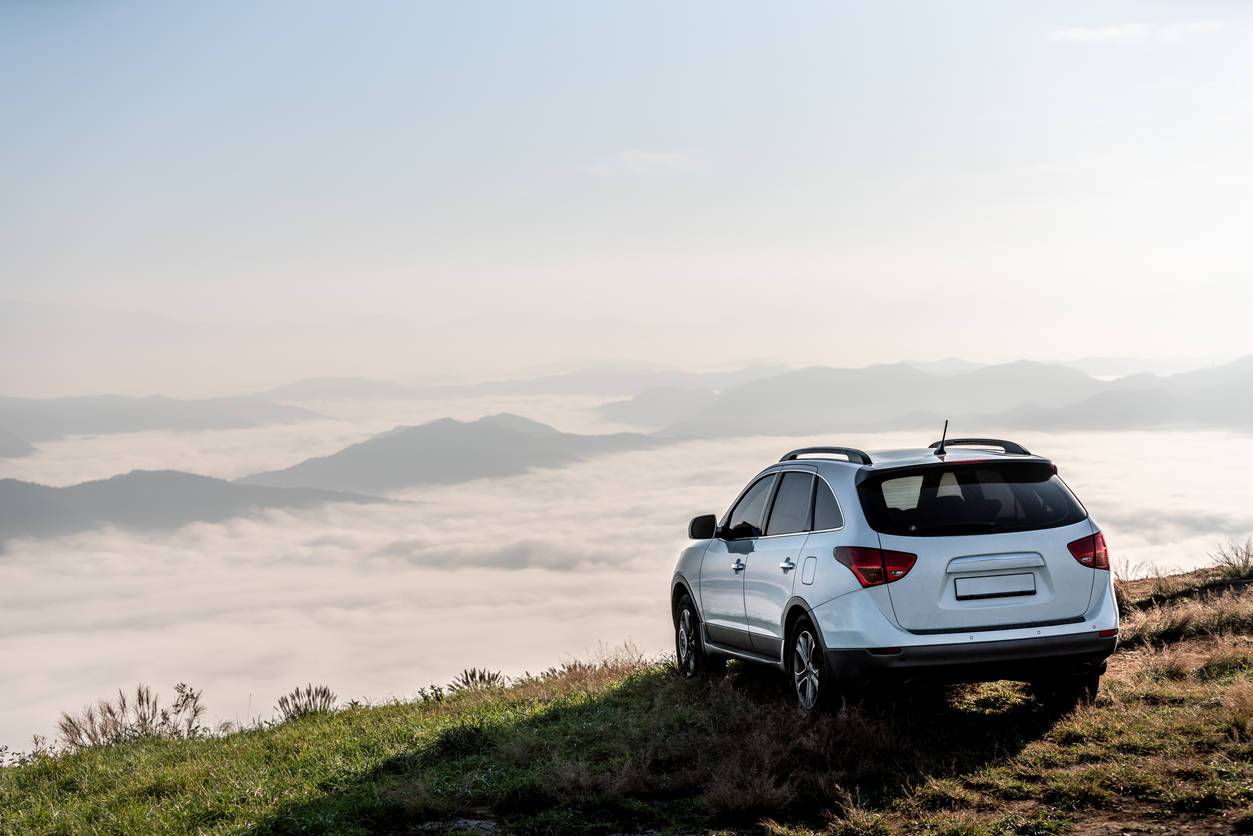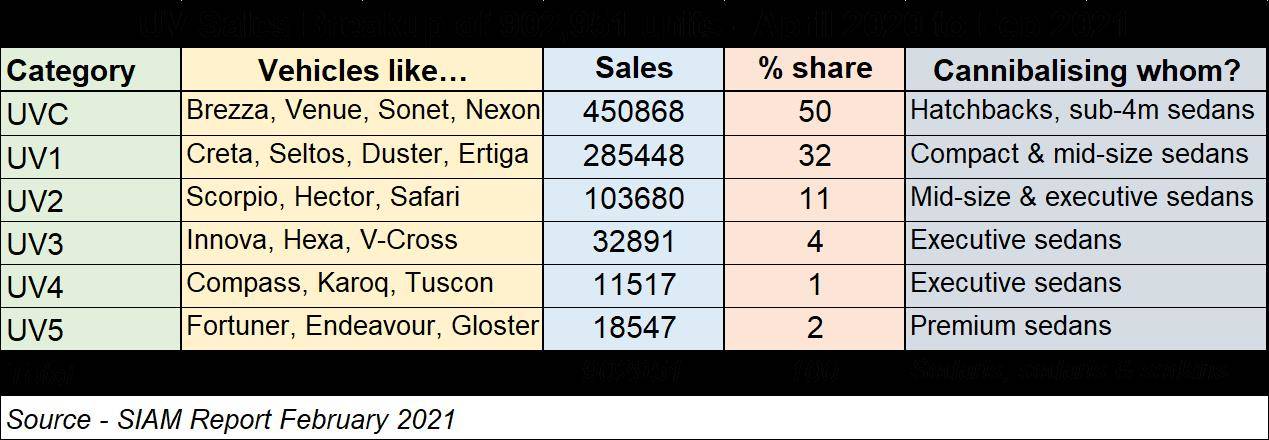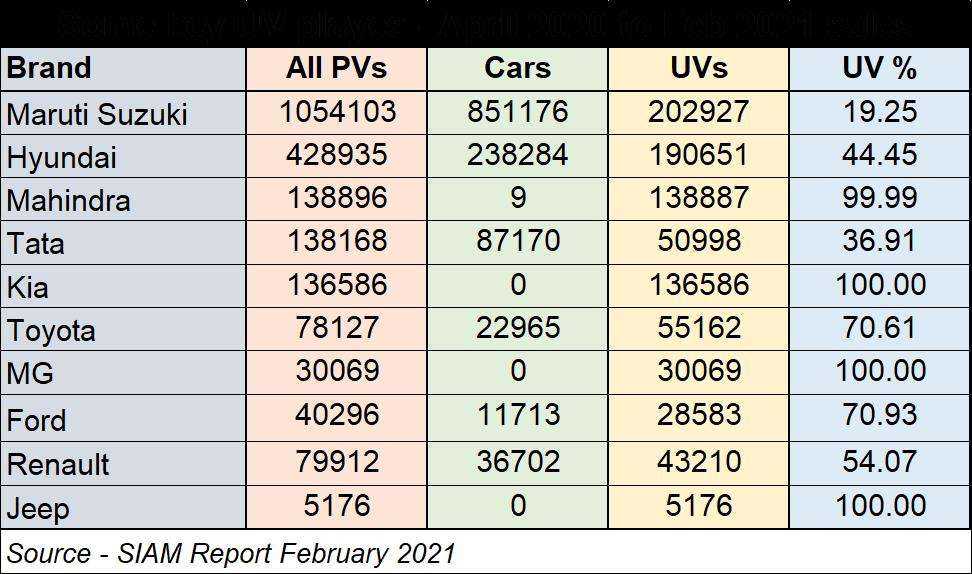 By Avik Chattopadhyay
By Avik ChattopadhyayFord has decided to axe the Mondeo in favour of a new SUV for Europe. VW has thrown in its last gamble in the Indian market with the “SUVW” plan of 4 SUVs in the portfolio. Skoda is overhauling its portfolio with new SUVs. Maruti Suzuki might finally bring a four-door version of the Jimny. Toyota has rebadged Vitara Brezza as Urban Cruiser to offer a cheaper SUV in its showrooms. Citroen steps onto the Indian roads for the first time with the C5 Aircross. Mahindra announces a slew of new SUVs to stay relevant to tomorrow’s customers.
Here an SUV, there an SUV, everywhere an SUV! Seems that the old McDonald’s farm has nothing but SUVs. But this phenomenon is not uniquely Indian. What was once restricted to specific markets like the US, Russia and Australia due more to application than merely a fashion statement has now blossomed into a highly evolved and segmented vehicle category. Almost all automakers, across the price and positioning spectrum, have been investing a significant portion of their R&D budgets in churning out more SUVs, be they diesel, electric or hydrogen.
UV is not a new phenomenon and it did not start with the Land Rover Defender of 1948. That was preceded by the Russian GAZ-61 by ten years. Some may point out that the Japanese TokyuKurogane Type 95 came out in 1936, but then it was purely for military application.
Though there is no single globally accepted definition for Sport Utility Vehicle (SUV), the vehicle credited with using this term for the first time in its advertising was the 1984 Jeep Cherokee XJ. And that opened the floodgates of a new body-style all across the US which has now firmly established its following in every country on this planet!

SUV, SUV everywhere!
I will spend some time on the sales numbers from April 2020 to February 2021 to establish this phenomenon. Mind you, this was a terrible period for automobile sales and though we do see a ‘revival’ from September, there is a long winding road till we are out of the woods.

When we see the March 2021 numbers, to be shared by the Society of Indian Automobile Manufacturers (SIAM) anytime now, the narrative will get confirmed.
So, what really constitutes the “UV” category? It extends right from the compact utility vehicles, which are less than 4m long, to the full-blooded 4WD off-roading mammoth. Let us take a closer look at how the numbers stack up for various types of UVs as classified by SIAM.
Looking at the names of the vehicles mentioned against each category gives a fair idea of the type of UV, in size, power and capabilities. I have deliberately given the vehicle categories each UV category cannibalises, as the overall market pie is not growing while the share of UVs is. The biggest casualty is the conventional sedan…that symbol of elegant status that every upwardly mobile aspired for till the turn of the millennium.
Why do Indians love SUV?
Not for the off-roading, silly! We love the body-style. The UVC is nothing but hatchbacks on steroids. The UV1 is also the same sedan platform with the top hat of an SUV.
The main reasons for this new-found love are:
- The high seating gives a ‘commanding’ view of the road, almost like you are sitting on a throne while the plebians in the lower vehicles pass by below you; this is your chariot on tyres!
- For the lady drivers, it is a sure feeling of greater security as the big shape looks more intimidating than a hatch or sedan.
- The higher ground clearance is a reassurance that you will counter the potholes as well as speed breakers without much trepidation. However, given the way SUV owners tend to even avoid pools of water in the monsoons, one would have thought otherwise!
- Looks masculine and brawny enough…in fact, the more, the better; those that tried going against this trend perished soon.
- The ‘mono volume interior allows a feeling of more space, especially if you have a sunroof, and also offers more practicality in accessing the rear storage space.
These reasons are not too different from those in most other markets like China, Brazil, Germany or Gabon, irrespective of the quality of roads and social equations of status and power.
So, automakers in India have gone about re-jigging their product portfolios over the last decade to offer more SUV-styled vehicles, including some at the entry level like the S-presso, Kwid and Redi-go! Let us take a look at the growing share of UVs in some leading brands in India vis-à-vis cars.
Except for Maruti Suzuki, which caters largely to the entry level, all the others have UVs making up at least one-third of their sales.
In fact, there are six brands that operate in India only with UVs in their portfolio – Stellantis (Jeep), Mahindra, Force, MG, Kia and Isuzu!
Is SUV a ticket to success?
In order to get the drift, I will go back to the times when LED TVs and smartphones burst upon the Indian market. In both the categories, brands mushroomed all around, either as offerings from the existing players or from totally new ones entering the product category for the first time. Once the dust of the product euphoria settled down, only the ‘strongest’ remained, once again proving Darwin right. The strength did not lie in mere size or expertise, but in relevance, customer understanding and service orientation.
I will cite seven specific reasons, with some real-world examples, to drive home my opinion that merely offering an SUV is not a ticket to success in this market.
Been there, done that. Nah!
Just because I have been in the automobile business for years and am a market leader does not guarantee that my SUVs will be accepted as well. Remember Nokia? From being the cover story of Forbes in 2007 on being unstoppable, the market leader was wiped out in less than 10 years! Watch out Maruti Suzuki…are you being just too slow in the SUV race?
I have been successful elsewhere. Really?
That logic should have applied to other body-styles too when they were more popular. Sony, Panasonic and LG are huge names in other smartphone markets but have bombed in India. Do not take the Indian market as a mere follower of trends elsewhere.
I am “premium”. Big deal!
So was Opel, Sony Ericsson and Blackberry. Being premium does not mean charging more but being recognised as one by the customer. If Zara starts giving discounts from week 3 of its existence in India, it is not considered to be valuable enough. If people choose a Fortuner or Endeavour over an X1 or a Q3 even with their discounts, there is more to what the customer looks for than merely being a self-announced premium.
I offer terrific value. Not enough!
So were Micromax, Intex, Lava and Karbonn as smartphones. We shunned them for Mi, Redmi, Oppo and Vivo. Just having the same features as others at a less price point makes a brand vulnerable to technology evolution and obsolescence. The ownership lifecycle plays a much stronger role here. Lesson for Nissan?
Right segment. Wrong product
One of the reasons for liking the SUV is its masculine looks. If you try bringing in a product that looks ‘sissy’, it will not work, however big a name you may be. The S-cross is a living example. The Kaptur is a dying one. Hope Honda has learnt.
I am “Indian”. So what?
That card does not hold water anymore. The consumer wants the best of the world. Hence, he/she dumped Micromax, Lava, Intex or Karbonn for Mi, Redmi, Oppo or Vivo. As an Indian brand, you have to be truly world-class to be aspirational. Look hard Mahindra…
My cousin is the same vehicle
Weak excuse! The case of Duster and Terrano is an example to drive home this truth. Just because one works, the other need not, especially as the ‘other’ has no reason to exist except for being a substitute when the ‘one’ is not available. Pointer to Skoda and VW?
The bottom line
SUV is not a “fad” that will fade away like certain fashion trends. The product offering rests on strong fundamentals using a mix of emotional and practical reasons. It will see attempts at making the body-style look slicker and sportier as we see in the premium and luxury brands like Jaguar, Mercedes, BMW, and Audi. The ‘perfect’ shape is not there as yet, but it is just a matter of time. Also, this does not mean that the traditional hatch and sedan will wither away. They shall continue to enjoy a loyal following, and an SUV will not be able to take away the elegance and proportions of a sedan anytime. They shall all co-exist, with the SUV body-style becoming the predominant player…by quite some distance!
(The author is co-creator of Expereal India. Also, he is former head of marketing, product planning and PR at Volkswagen India.)
(DISCLAIMER: The views expressed are solely of the author and ETAuto.com does not necessarily subscribe to it. ETAuto.com shall not be responsible for any damage caused to any person/organisation directly or indirectly.)
















